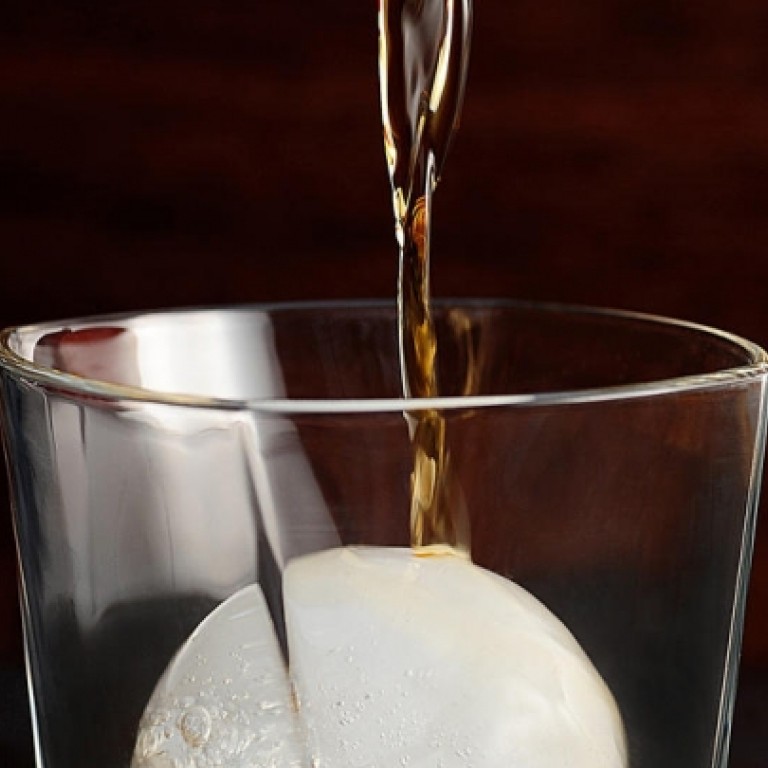
Lynam Up: Japanese bartenders take care - and time
A mixologist friend once told me that his Japanese counterparts held Western bartenders in low esteem. I'm afraid Yoshitomo Hiramatsu has just independently confirmed this. "Bartending in other countries can be kind of rough," he says. "Often, everything is just poured in quickly, and it is too casual."
Hiramatsu and Shoki Sato, who own and operate bars in Osaka, were in Hong Kong for the Landmark Mandarin Oriental's fifth annual Masters of Mixology programme, which included an evening with the theme "Appreciate Japanese mixology techniques".
The Japanese stress the beauty, harmony and aroma of drinks
Those techniques are unique to Japan, say both bartenders. According to Sato, a student of cocktail history, Japan was not far behind the US in developing a culture of mixology.
By the 1880s, copies of Jerry Thomas's pioneering 1862 book were available in translation in Japan, and cocktails were being served at the emperor's dinner parties.
However, where American bartenders concentrated on speed and panache, Japanese bartenders have always approached mixing drinks with unhurried formality.
Every bartender, says Sato, has his own ritual, which he compares to a tea ceremony.
"I have my own sequence and way of doing things. The bottle has to remain perfectly perpendicular when it is picked up, and everything is cleaned up as the drink is made. The Japanese stress the beauty, harmony and aroma of drinks," he explains.
For a trained Japanese bartender, every aspect of the preparation of the drink is meticulous - proportions must be precise, each action carefully considered and respect for the customer absolute.
"Bars in Japan are small, and it's more intimate," Hiramatsu explains. "Because the customer can see everything the bartender is doing, it is important that it be done in a very professional and perfectionist way, and customers appreciate that."
The seriousness with which ice is taken is a good example of that perfectionism. Sato says the ideal temperature for ice in a cocktail is minus six degrees Celsius. Slightly confusingly, he calls this "dry ice" meaning that there is no melted water on its surface. Any warmer than that, he says, and it dilutes the drink too much.
"In Japan we don't make our own ice," says Sato. "An ice company supplies it, and in every region of Japan there is an ice company with a long history. Water in Japan is of very high quality, and the water for the ice is micro-filtered."
Japanese bartenders may not make their ice themselves, but they certainly do carve it, often into spheres, particularly for chilling whisky.
Ice theoretically melts more slowly in this shape, but it is probably fair to say that the real reason for the practice is aesthetic appeal. Or possibly just that it is very difficult and takes a long time to learn. Spherical ice moulds are available, but frowned on.
"Almost all bartenders in Japan can carve ice into spheres. Everyone can do it," says Hiramatsu.
Yes, but with the right attitude? "Sometimes customers ask, 'When you are shaving the ice, what are you thinking of?' I tell them I think of the people who are going to drink the whisky, my customers. That's what my masters taught me to do," says Sato.
He is a great believer in the passing on of traditions, but says times are changing. "In Japan, mixologist masters continue to work into old age, and the young people follow them and learn from the masters.
"But the training period now is a lot shorter than it was in the past. It used to be 10 years of training. Now it can be as little as three years."
Even if the training is now, by Japanese standards, hurried, bar service is not, and in a Japanese bar a drink - even if perfectly prepared - can take a very long time to reach the thirsty customer.
I ask Hiramatsu if anybody minds. He smiles.
"Perhaps the Japanese are just more patient."

